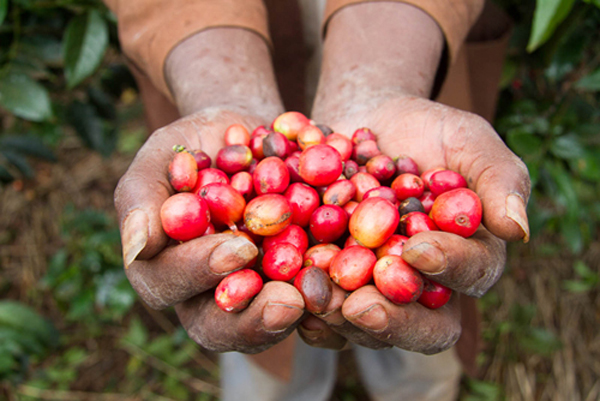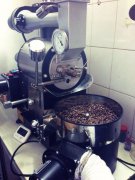The difference between Arabica and Robusta Arabica and Robusta Coffee Beans

Arabica Coffee Beans
Coffea arabica is known as Arabica coffee
70% of the world's coffee production is from Arabica beans.
Arabica coffee is grown in Central and North America, The Carribean, South America, Eastern Africa, Yemen, Papua New Guinea, Brazil and India.
The Arabica bean produces a mild, smooth, well rounded aromatic coffee and often features a sweet hints of chocolate or caramel.
It grows best at high altitudes such as mountainous and volcanic areas requiring mild temperatures between 59-75 degrees with an annual rainfall of approximately 60 inches.
The plant is quite delicate being prone to disease and the yield is much lower than Robusta.
It grows on terrain that is steep and difficult to access hence they are costly to cultivate.
Arabica is regarded as much more superior quality and is used to produce speciality coffees.
Robusta Coffee Beans
Coffea canephora is known as Robusta coffee
30% of the world's coffee production is from Robusta beans.
Robusta coffee is grown in Central and Western Africa, South East Asia, Indonesia and Brazil.
The Robusta bean produces a coffee that is hard, astringent and not very aromatic.
It is grown at lower altitudes and is able to tolerate warmer climates (preferring 75-85 degrees).
The plant is much hardier and disease resistant and yields much more than the Arabica plant making it cheaper to cultivate.
It is used mainly in blends and for instant coffees.
Robusta contains approximately three times as much caffeine content than Arabica.
Important Notice :
前街咖啡 FrontStreet Coffee has moved to new addredd:
FrontStreet Coffee Address: 315,Donghua East Road,GuangZhou
Tel:020 38364473
- Prev

The principle of roasting coffee beans the secret of baking coffee beans
The small, high-altitude raw Arabica coffee beans are like a warehouse full of chemicals. At present, scientists have identified more than 2, 000 known ingredients, of which 70 to 850 are aromatic ingredients, which can be called the most fragrant in the human diet. There are only 150 kinds of vanilla used for seasoning in the catering industry, and the mellow composition of wine is also far away.
- Next

Common roasting methods of coffee beans
Coffee roasting, hundreds of years of history in the past, people do not have these scientific tools, and finally want to determine how to heat the whole exothermic reaction? Simply, all of this will be used to determine the appearance and high-temperature baking process. The roasting process can be divided into four stages: bean steaming 1 training stage: 00 10 minutes; beans-140C, which is the most important endothermic reaction process of coffee and will be expanded in a slow period.
Related
- Beginners will see the "Coffee pull flower" guide!
- What is the difference between ice blog purified milk and ordinary milk coffee?
- Why is the Philippines the largest producer of crops in Liberia?
- For coffee extraction, should the fine powder be retained?
- How does extracted espresso fill pressed powder? How much strength does it take to press the powder?
- How to make jasmine cold extract coffee? Is the jasmine + latte good?
- Will this little toy really make the coffee taste better? How does Lily Drip affect coffee extraction?
- Will the action of slapping the filter cup also affect coffee extraction?
- What's the difference between powder-to-water ratio and powder-to-liquid ratio?
- What is the Ethiopian local species? What does it have to do with Heirloom native species?

